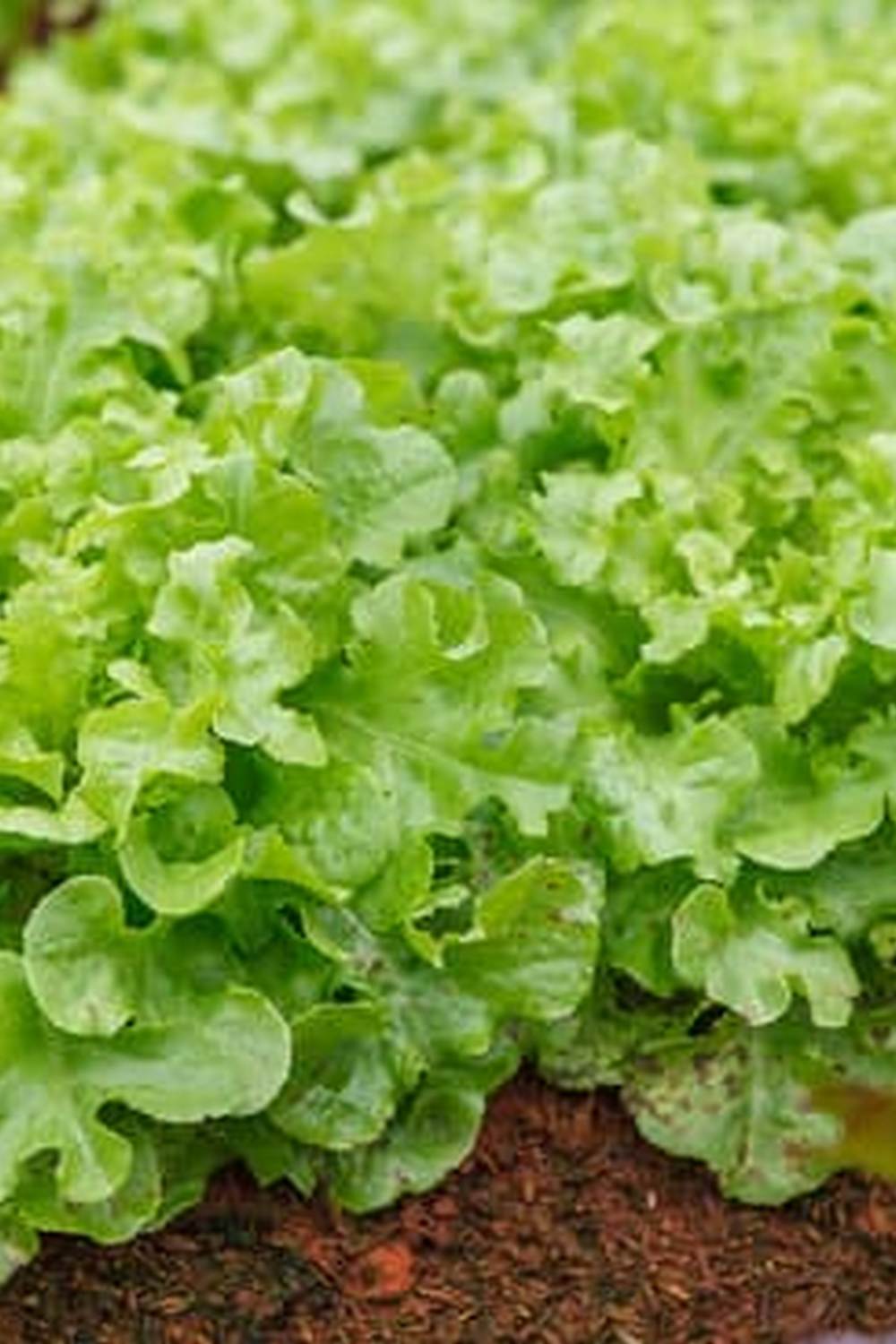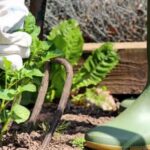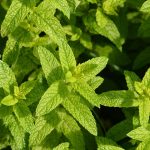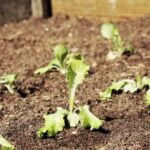Designs for large vegetable and fruit tree gardens require careful planning to make the most of your space. Assessing the size and layout of your garden area is crucial in determining how to efficiently utilize every inch of land. Factors such as sunlight exposure, soil quality, and access to water should be taken into consideration when designing a productive garden space that can yield an abundant harvest.
Once you have analyzed your garden area, it’s time to choose the right vegetables and fruit trees that will thrive in your specific climate and soil conditions. Selecting varieties that are well-suited to your region will ensure a successful and bountiful harvest. Incorporating a variety of fruits and vegetables not only adds diversity to your garden but also promotes a healthy ecosystem by attracting beneficial insects and pollinators.
In addition to choosing the right plants, consider incorporating companion planting techniques into your design. Pairing compatible crops together can maximize space usage, deter pests naturally, and promote healthy growth. By carefully planning out which plants work well together, you can create a harmonious and thriving garden that yields an abundance of fresh produce.
Choosing the Right Vegetables
When it comes to designing a large vegetable and fruit tree garden, one of the crucial aspects to consider is choosing the right vegetables that will thrive in your specific climate and soil conditions. Different varieties of vegetables have varying requirements when it comes to sunlight, water, and soil composition. Conducting research on what types of vegetables grow best in your region can help you create a garden that is not only bountiful but also sustainable.
For example, if you live in a warm, sunny area with well-draining soil, you may want to consider planting tomatoes, peppers, and squash. These plants thrive in hot conditions and require ample sunlight to produce abundant harvests. On the other hand, if you live in a cooler climate with acidic soil, you might opt for crops like kale, broccoli, and carrots which can withstand lower temperatures and acidic growing conditions.
Additionally, some vegetables are known for being more resilient against common pests and diseases prevalent in certain regions. By selecting these varieties for your garden, you can minimize the need for chemical intervention and promote a healthier crop overall. Researching which vegetables are best suited for your area can save you time and effort in the long run while ensuring a successful harvest season.
| Climate | Recommended Vegetables |
|---|---|
| Warm & Sunny | Tomatoes, Peppers, Squash |
| Cool & Acidic | Kale, Broccoli Carrots |
Incorporating Fruit Trees
Choosing the Right Fruit Trees
When designing a large vegetable and fruit tree garden, it is essential to carefully select the types of fruit trees that will thrive in your climate and soil conditions. Consider factors such as sunlight exposure, drainage, and water availability when choosing fruit tree varieties.
Apples, pears, peaches, and cherries are popular choices for many gardeners due to their versatility and relatively easy maintenance. It is also important to consider the size of the tree at maturity to ensure that it fits well within your garden space.
Planting Guidelines
Proper planting techniques are crucial for the successful establishment of fruit trees in your garden. When planting fruit trees, make sure to dig a hole that is wide enough to accommodate the root system without crowding or bending the roots. It is also important to plant the tree at the correct depth – typically where the trunk flares out at the base should be level with or slightly above ground level.
After planting, water thoroughly and add mulch around the base of the tree to retain moisture and suppress weed growth. Regular watering during the first year after planting is crucial for healthy root development.
Maintenance Tips
Regular maintenance is key to ensuring that your fruit trees remain healthy and productive in your garden. Pruning is essential for shaping the tree, promoting air circulation, and removing dead or diseased branches. Fertilizing in early spring can help provide essential nutrients for growth and fruit production.
Keep an eye out for pest infestations or diseases and address them promptly using eco-friendly methods. Regularly inspect trees for signs of stress or nutrient deficiencies and adjust care routines as needed. With proper care, your fruit trees will not only enhance the beauty of your garden but also provide you with delicious fruits season after season.
Companion Planting
One key aspect of companion planting is choosing plants that have beneficial relationships with each other. For example, planting herbs like basil or chamomile near tomato plants can help repel pests and improve the flavor of the tomatoes. Similarly, planting marigolds near your squash or cucumber plants can deter harmful insects and promote better growth. By carefully selecting which crops to plant together, you can create a natural system that supports the well-being of your garden.
In addition to pest control and improved flavor, companion planting can also help maximize space in your garden. For example, growing pole beans next to cornstalks allows the beans to climb the cornstalks, saving valuable ground space.
Planting low-growing crops like lettuce or radishes around taller plants like peppers or eggplants can also make use of every available inch in your garden. Overall, incorporating companion planting into your designs for large vegetable and fruit tree gardens can lead to a more productive and sustainable growing season.
Vertical Gardening
Benefits of Vertical Gardening
One of the key benefits of vertical gardening is that it provides better air circulation and sunlight exposure to your plants. This can result in healthier growth and increased yields. Additionally, growing vertically can help reduce the risk of pests and diseases, as plants are less likely to be overcrowded. Vertical gardening is also a great solution for gardeners with limited space or those looking to add visual interest to their outdoor space.
Types of Structures for Vertical Gardening
There are various types of structures that can be used for vertical gardening, including trellises, cages, stakes, and towers. Depending on the size and weight of your plants, you can choose the most suitable structure for your garden. Trellises are commonly used for climbing vegetables like tomatoes, cucumbers, and beans. Cages are ideal for supporting heavy fruiting crops such as melons and squash.
Stakes work well for tall or vining plants that need additional support. Towers are perfect for compact spaces where you want to grow multiple plants vertically. Experiment with different structures to find what works best for your garden design.
Irrigation Systems
When it comes to maintaining a large vegetable and fruit tree garden, having an efficient irrigation system in place is crucial for the health and vitality of your plants. There are several options available for watering your garden, each with its own advantages and considerations. Drip irrigation systems, for example, deliver water directly to the base of each plant, minimizing water wastage through evaporation or runoff. This can be particularly beneficial in large gardens where water conservation is important.
Another option for watering your vegetable and fruit tree garden is a soaker hose system. These hoses distribute water along their entire length, ensuring that the soil is evenly moistened without wasting water on areas where it isn’t needed. Soaker hoses are easy to install and can be customized to fit the layout of your garden. For larger gardens, a sprinkler system may be more suitable as it can cover a wider area with minimal effort.
In addition to choosing the right irrigation system for your needs, it’s essential to consider factors such as soil type, plant spacing, and weather patterns when planning how you will water your garden. By investing in a well-designed irrigation system, you can ensure that your large vegetable and fruit tree garden remains healthy and productive throughout the growing season.
| Irrigation System | Advantages |
|---|---|
| Drip Irrigation | Minimizes water wastage through evaporation or runoff |
| Soaker Hose System | Ensures even moisture distribution without excess waste |
| Sprinkler System | Covers larger areas efficiently with minimal effort |
Pest Control Strategies
Pest control is a crucial aspect of maintaining a thriving vegetable and fruit tree garden. One way to prevent pests from infesting your plants is by implementing natural and eco-friendly methods. These methods not only protect your crops but also help maintain a healthy ecosystem in your garden. Here are some effective strategies to consider:
- Companion planting: Planting certain herbs, flowers, or vegetables alongside your main crops can help deter pests. For example, marigolds are known to repel nematodes, while basil can help keep flies away from tomato plants.
- Beneficial insects: Encouraging beneficial insects like ladybugs, lacewings, and praying mantises can help control pest populations naturally. Consider planting flowers that attract these insects or even purchasing them from local gardening stores.
- DIY sprays: Create homemade insecticidal sprays using ingredients like garlic, neem oil, or hot pepper spray. These natural solutions can be effective against common garden pests without harming beneficial insects or the environment.
In addition to these natural methods, you can also employ physical barriers such as row covers or netting to protect your plants from pests like birds or small mammals. Regularly inspecting your plants for signs of pest damage and promptly addressing any infestations can also help prevent widespread damage in your garden.
By incorporating these natural and eco-friendly pest control strategies into your gardening routine, you can ensure a bountiful harvest of healthy fruits and vegetables without the use of harmful chemicals.
Harvesting and Maintenance
When it comes to designing large vegetable and fruit tree gardens, proper care, harvesting, and long-term maintenance are key factors in ensuring the success of your garden. After all the hard work put into planning, selecting the right vegetables and fruit trees, incorporating companion planting, utilizing vertical gardening, setting up irrigation systems, and implementing pest control strategies, it is important to continue to maintain and harvest your garden effectively.
Regular maintenance tasks such as weeding, pruning, watering, and fertilizing are essential to keep your garden healthy and productive. It is crucial to stay on top of these tasks to prevent pests and diseases from taking over your plants. Additionally, proper harvesting techniques can help maximize your yield and ensure a continuous supply of fresh produce throughout the growing season. Be sure to harvest fruits and vegetables at their peak ripeness for the best flavor and nutritional value.
Long-term maintenance of your large vegetable and fruit tree garden involves planning for successive plantings, crop rotation, soil amendments, and overall garden health. By taking care of your plants year after year, you can establish a sustainable garden that continues to thrive with each growing season.
Remember that gardening is an ongoing process that requires dedication and attention to detail. With proper care and maintenance practices in place, you can enjoy a bountiful harvest from your beautifully designed garden for years to come.
Frequently Asked Questions
How Do You Layout a Large Vegetable Garden?
When laying out a large vegetable garden, it is important to consider the size and spacing of each plant. Group plants with similar light and water requirements together. You may want to consider creating raised beds for easier maintenance and organization.
Can You Mix Fruit and Vegetables in a Garden?
Yes, you can mix fruits and vegetables in a garden. In fact, intercropping different types of plants can help deter pests, improve soil fertility, and maximize space usage. Just make sure to pay attention to the specific needs of each plant when planning your garden layout.
What Fruits and Vegetables Grow Best Together?
Some fruits and vegetables grow especially well together due to their complementary growing conditions. For example, tomatoes and basil are known to benefit each other when planted near one another.
Other compatible pairings include carrots and peas, corn and beans, as well as strawberries and spinach. By planting these combinations together, you can potentially increase yields and improve overall plant health in your garden.

If you’re looking to get into vegetable gardening, or are just looking for some tips on how to make your current garden better, then you’ve come to the right place! My name is Ethel and I have been gardening for years. In this blog, I’m going to share with you some of my best tips on how to create a successful vegetable garden.





